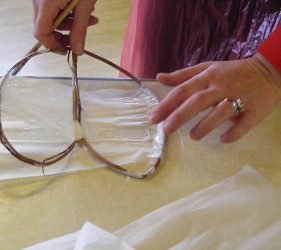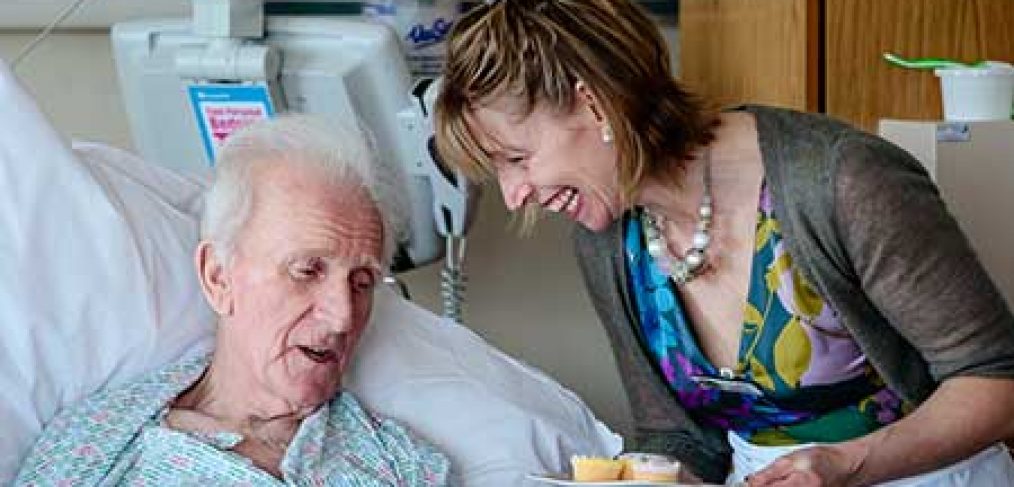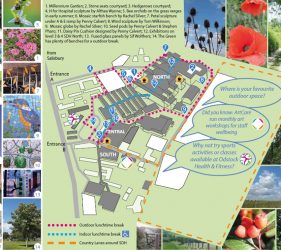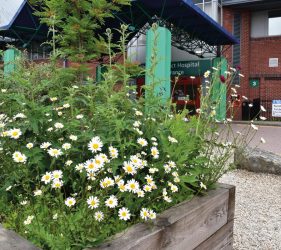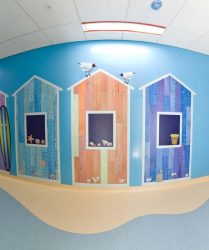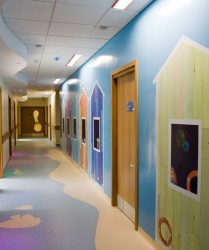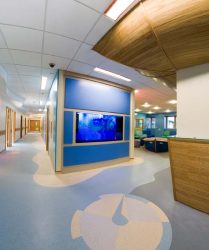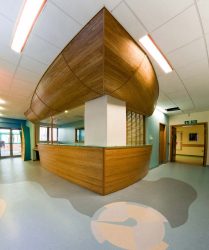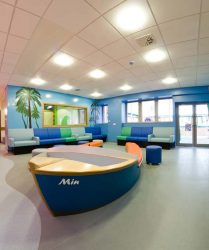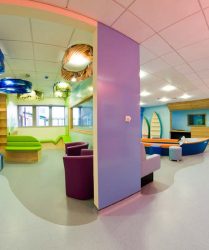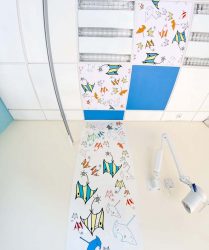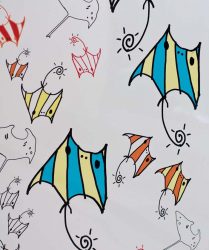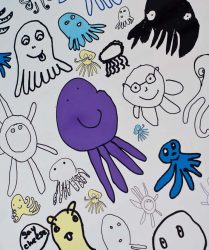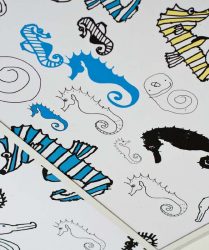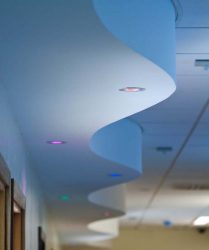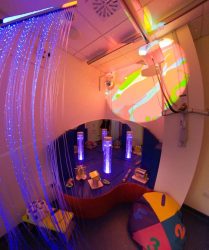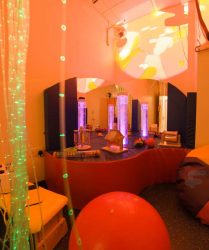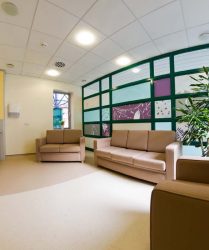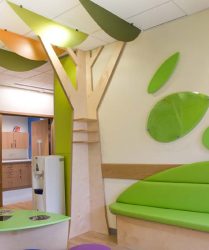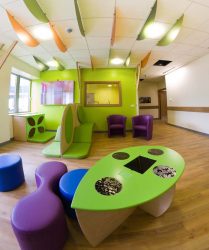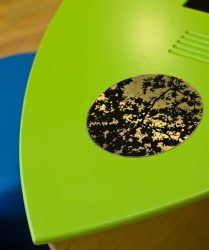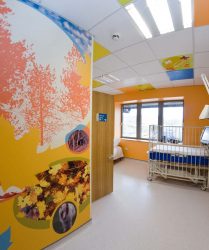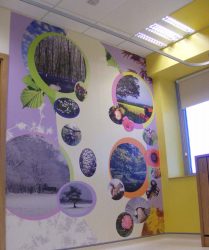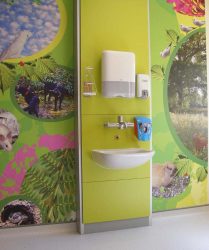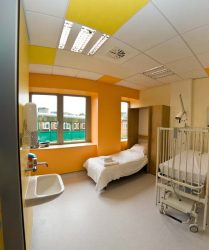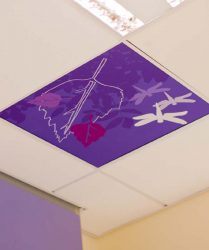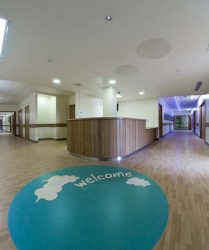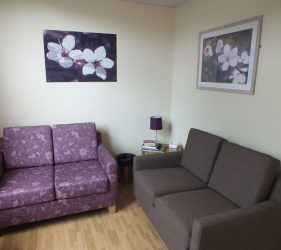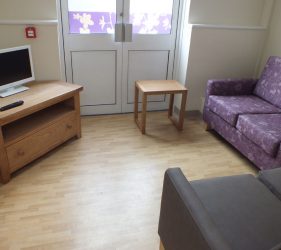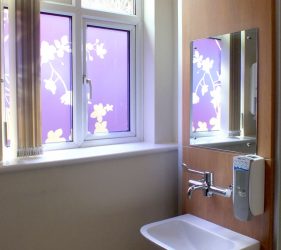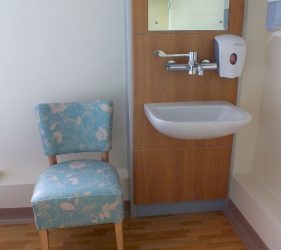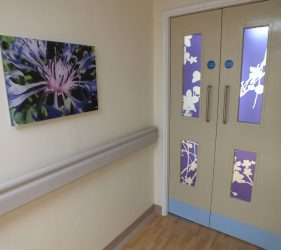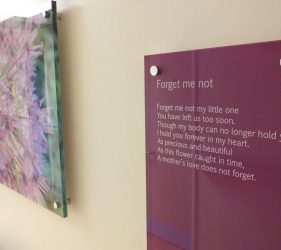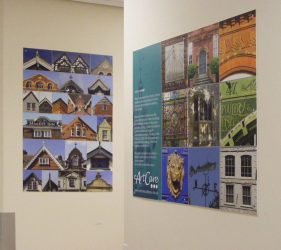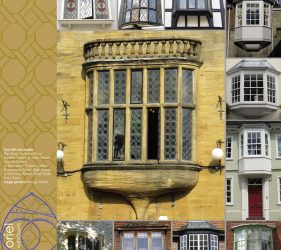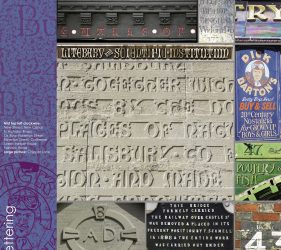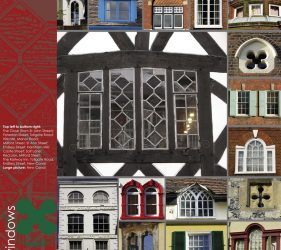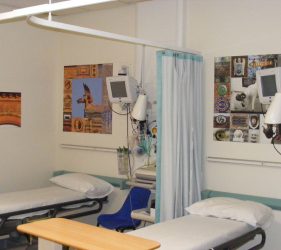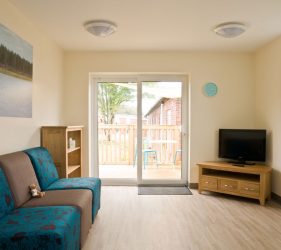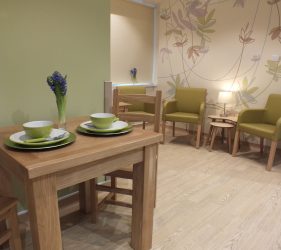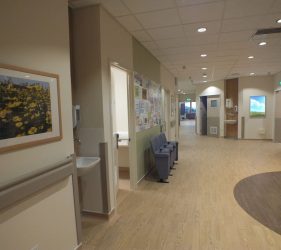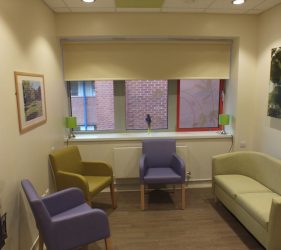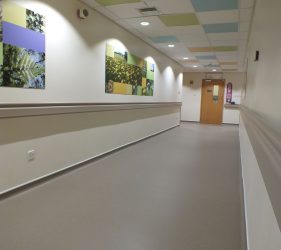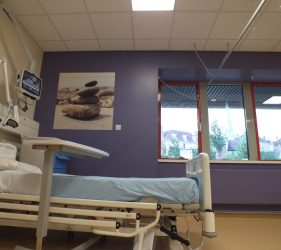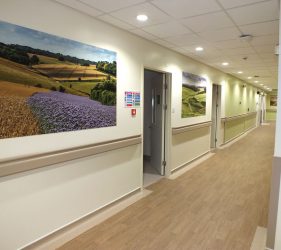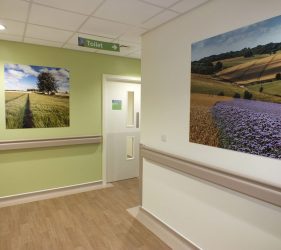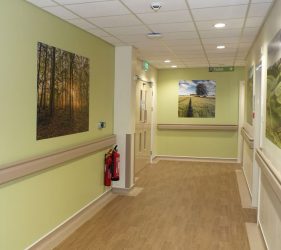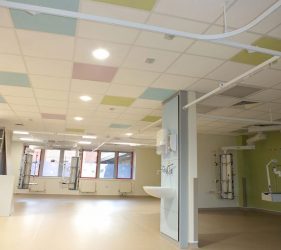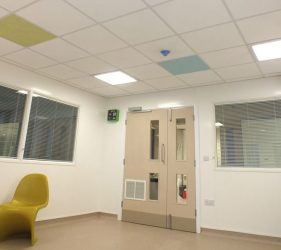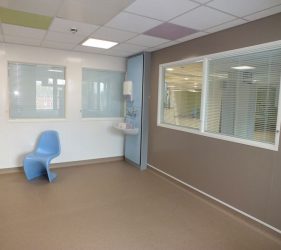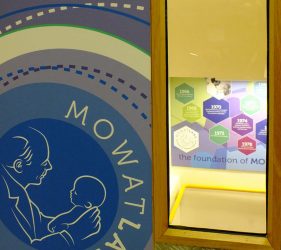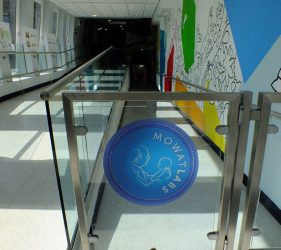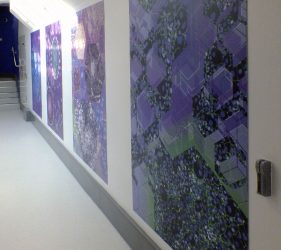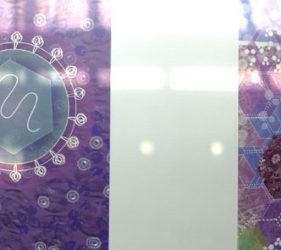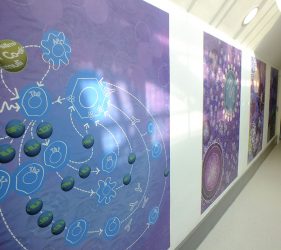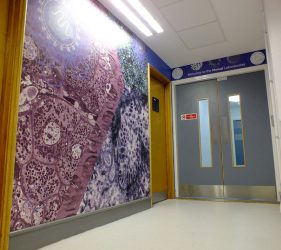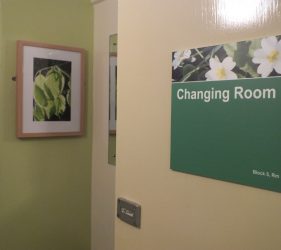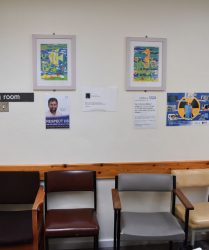Case Study – Meaningful public participation
The new Children’s Unit at Salisbury District Hospital replaced buildings dating back to World War II. Outpatient, Inpatient, Day Assessment and Therapy services moved into a refurbished two storey section of the main SDH North hospital building in July 2011. In order to lift the Unit environment from acceptable to exceptional, the refurbishment included art commissions funded through the Stars Appeal Caring 4 Kids campaign. Many local people and businesses worked hard to raise the donations to create a state of the art Unit that is child and family friendly.
An essential part of the design process was to connect with children, staff and the public to get a better understanding of what was needed for this Unit. Following the initial online survey in June 2008, the steering group and artists, led by ArtCare, committed to putting meaningful public participation at the core of the design process. The steering group, governing the commission’s process included staff, parent and patient representatives. This ensured the balance of quality design and practicality to create an environment that is both functional and fabulous.
Themes based on the natural environment were chosen to help reduce the clinical atmosphere of a hospital building and were agreed by public vote. For Level 3, Outpatients and Therapy departments, the theme is ‘Waterworld’ and for Level 4, Inpatients and Day Assessment Unit, the theme is ‘Treetops’. The art commissions were an integral part of the overall interior scheme from the outset, ensuring the chosen themes were fully incorporated into the design of the Unit. The result is an innovative, robust and quality environment with focal points that distract and delight patients, families and staff.
Throughout the design process, ArtCare delivered creative workshops with 1100+ children to source inspiration for the new Children’s Unit. Ideas and artworks from this workshop programme were used directly in finished installations such as printed Digiclad™ panels (unique wall cladding) in consulting rooms and bedrooms, and indirectly as research materials for commissioned artists. The artists themselves also worked with children during their design process.
The teen waiting room was co-designed by local teenagers who took over an empty shop to build a full-scale model from cardboard of their ideal waiting area. Boex, the designers, then used their model to create the final design for the space. School pupils prepared reclaimed pallets to created the ‘wooden’ Digiclad™ beach huts along the main Outpatients corridor. Over two years, photography AS level students at Burgate Sixth Form Centre worked on a ‘live’ brief to produce images for use in the Unit. Their photos enliven Inpatient’s corridors, are sampled in the bedroom panels and even the bedside TV is customised with their images as backgrounds.
I love this room because I helped design it!
The engagement in meaningful public participation built on links between the hospital and the local community. Children learnt new skills and more about the life of the hospital, that it’s not just a place to get well. The creative workshops were mutually beneficial, integrating with the national curriculum and school topics. Public participation meant children, parents, staff and the public being really involved – literally making their mark. The result is a new Unit with a unique identity, which is child and family friendly. Playfulness is present throughout, from flooring and seating to lighting and ceiling tiles, creating a distraction and interaction whether in therapy, treatment or as an inpatient. In short, the new Children’s Unit was designed with children for children.
Download ‘Waterworld and treetops’ (pdf) – ArtCare’s colourful project record that reveals more about the artworks in the Children’s Unit and the participation of local children in the design process.

